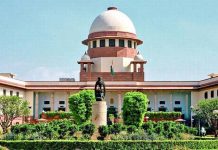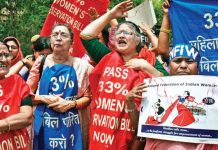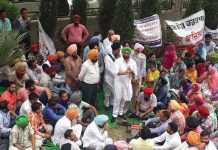YSR has shot back to power, thanks to strategic moves and a massive PR exercise, says Ajit Sahi

SHORTLY AFTER the second and final round of balloting for the Lok Sabha elections in his state ended on April 23, Andhra Pradesh Chief Minister YS Rajasekhara Reddy travelled to New Delhi and met Congress president Sonia Gandhi. “32,” he told her, according to a senior party leader. That was the number of Lok Sabha seats he promised the party would win in his state. And then, he proceeded to the cool environs of Shimla for a short but much needed break from politics.
As it turned out last week, Reddy’s Congress won 33 of the state’s 42 constituencies — four more than in 2004 — giving Andhra Pradesh the distinction of sending the largest number of Congress MPs from any state to the 15th Lok Sabha. YSR, as he is widely known, also won 158 of the Assembly’s 294 seats, becoming the first Congress CM in three decades to get a successive second term. Incidentally, he is also the state’s only CM to ever complete a full five-year term.
What makes the win unique is that YSR, who will be 60 years old in July, successfully sidestepped a massive campaign alleging corruption, launched by his key rival, former Chief Minister Chandrababu Naidu’s Telugu Desam Party (TDP) and its four-party alliance. The TDP led ‘Grand Alliance’ had even presented President Pratibha Patil with documents to back claims that the chief minister and his son, YS Jagan Mohan Reddy — who, too, has been elected an MP — were involved in illegal land and corporate deals, including the Satyam scandal.
YSR’s son launched a publicity campaign through his newspaper and TV news channel
But the voters didn’t buy that. “Everyone accepts that corruption is natural,” says political commentator K Sree Lakshmamma in the central town of Guntur. “People voted for YSR’s development work of the last five years, ignoring the charges of corruption.”
“YSR was focussed on bringing in development right from the start,” adds Amar Devulapalli, chairman of the Press Academy of Andhra Pradesh in Hyderabad. “Two crore people have benefited from his schemes; the voters didn’t want to disturb his government.”
Much of YSR’s famous victory is attributed to his all-round personality, that of a crafty politician, who deeply values and rewards loyalty, and a no-nonsense administrator. YSR began on a high after becoming CM in 2004, crushing Naxal insurgents that had been entrenched in Andhra Pradesh for decades and had killed thousands of police and paramilitary, after talks with them broke down.
[box]
PARTY POSITION
ANDHRA PRADESH
LOK SABHA SEATS
CONGRESS: 33
BJP: 0
TRS: 2
TDP: 6
ASSEMBLY SEATS
CONGRESS: 158
TDP: 92
TRS:10
PRP: 18
[/box]
A medical doctor who once treated the poor for free, YSR’s welfare sops included selling rice at Rs 2 per kg, ensuring free medical treatment to BPL (below poverty line) families at ‘corporate’ hospitals, supplying free electricity to farmers, a pension scheme for widows, waiver of farm loans, and a highly subsidised housing scheme named after former Prime Minister Indira Gandhi. YSR also announced a four percent reservation for backward Muslims.
WHEN FILM star Chiranjeevi launched the Praja Rajya party (PRP) last August, triggering speculation that he could challenge YSR, the chief minister immediately began a comprehensive PR campaign publicising his various welfare steps, the most notable being the massive irrigation projects worth over Rs 1 lakh crore to provide water to some ten million acres of agricultural land.
In fact, YSR chose the route of launching welfare schemes — which have totalled 26 — to not only trip up the opposition but also wean away legislators from a rival within the party: state Congress president, D Srinivas, who has lost the Assembly election. Predictably, more than 180 of the Congress candidates that fought the Assembly elections are YSR loyalists. This has ensured that his base within the party remains strong, even after some 14 ministers lost the election, as did the Assembly speaker.
After a former ally, the Telangana Rashtra Samiti (TRS), which wants a separate state in the Telangana region of northwest Andhra Pradesh, quit the Congress-led alliance in 2006, YSR launched several welfare schemes in Telangana. “We wanted voters to move away from the TRS,” says a Congress leader close to the chief minister. YSR’s focus on Telangana paid off as the TRS won only 10 of the 46 Assembly seats it contested there. The Congress won 50 seats.
In the coastal regions, YSR called off a 1,000-km industrial corridor when protests by villagers, who claimed that they were being forced to part with their land, threatened to balloon into a controversy. This was a smart political move, because many of these villagers belonged to the numerically significant Hindu Kapu caste. Chiranjeevi, who is a Kapu, failed to get the caste to vote en masse for the PRP. Instead, they voted for YSR.
YSR’s son Jagan, who also campaigned dedicatedly across the state, launched a huge publicity campaign through his newspaper and TV news channel, both named Sakshi. As the state’s two biggest newspapers — Andhra Jyothi and Eenadu — ran news exposing government corruption, Sakshi took on the opposition and highlighted the government schemes.
All throughout, YSR ensured that he kept party bigwigs on his side. He shrewdly obliged three ministers in Prime Minister Manmohan Singh’s previous government, S Jaipal Reddy, D Purandareswari and Panabaka Lakshmi, by giving them new constituencies from where each of them won.
A smart strategist, YSR launched on a month-long election tour covering more than 20 districts in the state, working 18-hour days, until long after his key rivals — Chiranjeevi as well as Telugu film actors Junior NTR and Balakrishna of the TDP — were beginning to wind down. Indeed, YSR’s achievement is being hailed all the more because he humbled two giants — former CM Naidu whose TDP ruled the state for three terms during 1983-2004, and Chiranjeevi, whose PRP was widely expected to mount a massive challenge.
Naidu’s loss is more overwhelming because he stitched up a pre-election alliance with three former Congress allies: the TRS, the Communist Party of India-Marxist and the Communist Party of India.
That the PRP would undercut the Congress and not the TDP was the biggest miscalculation most people made, including Naidu,” says commentator BV Chalapathi Rao, a politics professor in Sri Venkateswara University in the temple town of Tirupathi. Actually, the TDP and the PRP ended up undercutting each other, thereby benefitting the Congress tremendously.
A close look at the numbers reveals that in as many as 25 Lok Sabha seats that the Congress won, the combined votes of the TDP-led four-party alliance and the PRP exceeded the Congress votes. In at least 17 of those seats, the opposition jointly polled more than a lakh votes over the winning Congress candidate. Indeed, although the final Lok Sabha tally read Congress 33 and the TDP-led alliance 8, the vote difference between the two sides was only a fraction over one percent. But a winner-takes-all system that doesn’t care how the vote is split ensured that the Congress ‘swept’ the state and YSR emerged a hero.
ajit@tehelka.com













